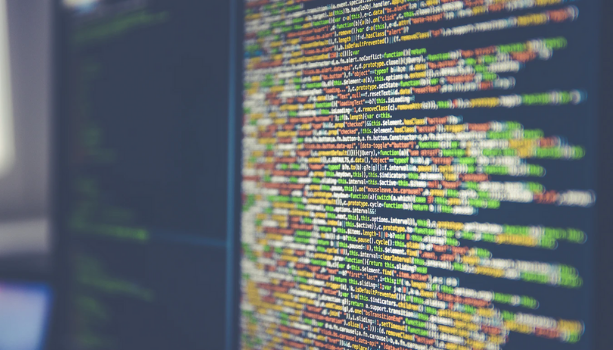An Expert Guide to Preventing Sensitive Data Leaks
Even at this very moment, countless data transactions are taking place in different organizations, businesses, and even between individuals that make up our society. Individuals get to enjoy the benefits by providing their own data, and sometimes also share personal information with different entities, including governments, employers, telecommunications, and service providers, to fulfill their obligations. In addition, personal data is provided to those entities through various channels such as membership subscriptions, email subscriptions, and app downloads via online events.
Businesses store this huge amount of data online, and this sometimes gives hackers opportunities to attack and exploit personal information. As proof, the sensitive data leak is evaluated as the third most prominent web vulnerability among the ‘2020 Top 10 Web Application Vulnerabilities’ also known as the OWASP Top 10 of 2020. The result was the same back in 2017, and these emerging attacks tend to mainly target sensitive data, therefore, businesses have the responsibility to protect the privacy of their employees and customers.
Many people use the terms ‘sensitive data leak’ and ‘data breach’ interchangeably with no distinction being made between the two. In general, a sensitive data leak occurs when an organization inadvertently discloses sensitive data (personal, financial, or internal data) and inadequately protects its databases. There are many reasons that an incident like this can occur, but some of the main reasons include failing to build a strong encryption system, exposure of web application vulnerabilities, lack of a multi-factor authentication system, and simple database configuration errors.
On the other hand, a data breach refers to a situation where a third party gains access and obtains sensitive data through malicious acts. Although most data breaches result in sensitive data leaks, not all sensitive data leaks lead to data breaches.
Here are some of the most common causes of sensitive data leaks.
Common Causes of Sensitive Data Leaks
1. Saving Data as Plain Text
A major cause of sensitive data leaks is the lack of a proper encryption system. Most data breaches caused by poor encryption occur in small and medium-sized enterprises (SMEs) that are not regulated by privacy laws. It’s important to keep in mind that most hackers target any company regardless of size or industry sector if there are financial benefits. Storing sensitive data in plain text is very risky because hackers can target web application vulnerabilities and access application servers. In particular, websites without SSL and HTTPS security measures are vulnerable to cyber-attacks.
However, database encryption isn’t as difficult as people might think. Database encryption solutions like D’Amo make it easy for businesses to manage automated column encryption for data protection. D’Amo enforces encryption at the application, system, and network levels while maintaining the searchability of the database.
2. SQL Injection
SQL injection has always ranked highest in the OWASP Top 10 vulnerability list and is the biggest threat to web applications. Hackers inject malicious SQL into queries in web applications to retrieve sensitive data from web application servers. Efforts to monitor and filter all user input logged in web forms are necessary to protect against and prevent server compromise. The best way to reduce the damages of SQL injections is to invest in a web application firewall solution, as WAFs have now become the most basic security measure for most enterprises today.
3. Ransomware Attack
Ransomware is a typical cyberattack that causes enormous damage to business operations. Ransomware hackers take personal data hostage and demand financial benefits from organizations. Naturally, hackers should increase their chances of attacks by taking sensitive data while companies with large amounts of such data should try their best to encrypt and protect these data in advance.
This demonstrates once again how important encryption is to keep data safe. Of course, encryption is important, but for companies that deal with sensitive data, backing up and managing critical data on an isolated network is just as important. Combining these two types of security measures can efficiently help organizations mitigate the damages of a potential ransomware attack.
4. Weak Authentication
Unlike other sources of sensitive data leaks, obtaining login information or bypassing authentication security allows hackers to gain direct insider access and compromise all other security measures. Hackers can use a variety of social engineering attacks and brute force attacks to log in. With a large amount of personal data already spread across the dark web, social engineering attacks are becoming more and more common these days. Therefore, it is important to establish strong passwords and adopt a multi-factor authentication (MFA) solution.
5. Insider Threats
Sensitive data leaked by employees within the organization is happening more frequently. This usually happens because of a phishing scam that demands ‘admin login credentials. Most of the time, the phishing itself does not require sophisticated skills, but is highly effective, making it one of the most frequently used cyberattack tactics by hackers. As phishing is a matter of individual security habits and security awareness, many organizations are obliged to provide cybersecurity training sessions to their employees.
Another reason why insider threats arise is because of the people you currently work for or have worked within the past. They knowingly disclose sensitive information for financial gains or personal reasons. To prevent such attacks, it is important to periodically update your login credentials and limit access to specific accounts to as few users as possible. By granting permission only to those who need immediate access to the database, the risk of data breaches can be greatly reduced.
Account management systems provide features that allow admins to easily deal with login credentials, employee account authentication and privilege management, access restrictions, and others that help mitigate insider threats.
No security measure completely blocks the chances of data leaks. As the IT environment evolves, hackers are always looking for new ways to break-in. Therefore, organizations must continually review these common causes of data exposure and invest in appropriate security measures to address these issues to comply with data privacy regulations.
